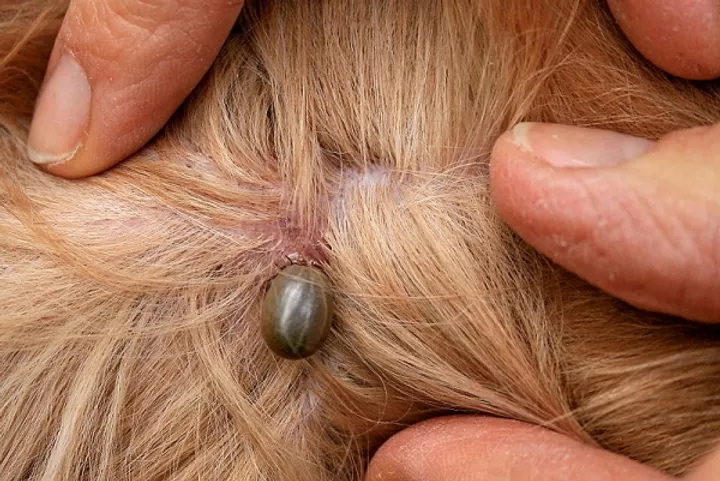Ticks are a relatively common parasite in our area. At times, they are a VERY common cause of concern (or even panic!) amongst pet owners. If you have found a tick on your pet, here are some “Do’s and Don’ts” of removing the tick.
Do:
-
Part the fur so you can see where the tick is attached to your pet’s skin.
-
Grasp the tick (using a specialized tick remover or common household tweezers) as close to the skin as possible.
-
Using firm, steady pressure, pull the tick away from your pet’s skin until it is removed.
-
Clean the area where the tick was removed using alcohol if necessary.
Don’t:
-
Use flame or heat to burn the tick.
-
Use alcohol, peroxide, or other methods to irritate the tick in an effort to get it to back out
-
Freeze the tick off the pet
Methods that irritate the tick (burning, freezing, chemicals, etc) can cause the tick to regurgitate its stomach contents as it is removed. This can increase the risk of disease transmission as Lyme Disease is carried in the tick’s gastrointestinal tract. Simply pulling the offensive creature out is safer AND more effective.
The saliva of ticks is very antigenic. This means it will produce a significant immune reaction in the animal that has been bitten. It is quite common for a bump to develop after a tick bite. It will at times look irritated, scabbed, and raised. These reactions may take up to 3-4 weeks to completely resolve.
If your pet has been bitten by a tick, do not panic! Thankfully, peak disease transmission occurs after the tick has been attached for 24-48 hours. Quickly removing the tick will reduce the chance of disease transmission by quite a bit. Using preventative products and regular tick checks will help with disease prevention and early diagnosis.
As always, we are more than happy to help you out with any tick related concerns. Don’t hesitate to give our hospital a call!
Article Written By:
Derek Williamson, DVM
Companion Animal Hospital Vernon Hills and Crawford Animal Hospital
What's Next
Call us or schedule an
appointment online.Meet with a doctor for an
initial exam.Put a plan together for
your pet.


